Sea Trader: Rise of Taipan - Unique, But Not So Sweet
05/08/25
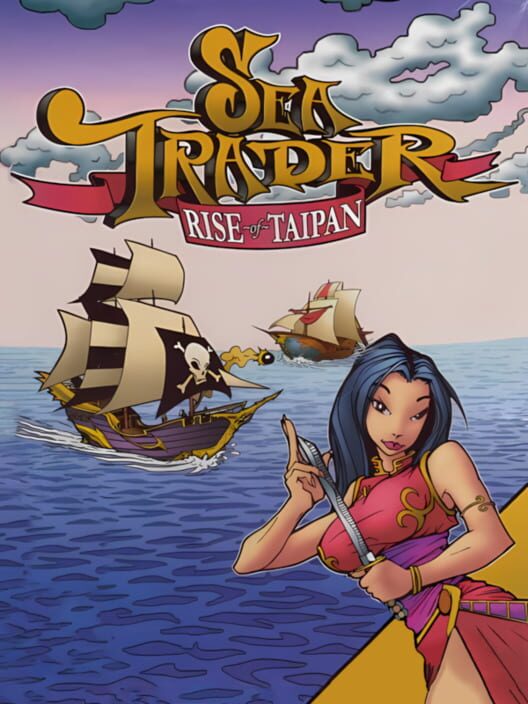
Whilst, like any other platform, there’s a pretty decent variety of genres and styles of games to play on the Game Boy Advance, there are some pretty clear majorities and biases in what you can play on the little handheld that could. You’ve got a metric buttload of platformers, a chunk of RPGS, and a smattering of more puzzle-oriented titles. But as I slowly crawl my way through the metaphorical abyss of Game Boy Advance titles, I find something that feels totally unique in the console’s library, and I think few games embody that sense of discovery other than Sea Trader: Rise of Taipei. And it’s that sense of surprise, of uniqueness, that drives much of my thoughts on this old-school nautical economic sim. Truly, there’s nothing else like it on the game Boy Advance, but if you’ve got any - and I mean any - previous experience with this style of game you’ll quickly realise how hollow, how sauceless, and simply how repetitive this game really is.
Beyond its uniqueness as likely the only economic sim on the GBA (at least that I know of), Sea Trader also exists in the sphere of GBA titles that were only released in the US. At first, I thought such a selection wasn’t that small, as there were 149 titles listed on the Nintendo Wiki as being US exclusive, but once you remove all the Game Boy Video titles and the licensed titles that wouldn’t have done any numbers at all in Japan (I can’t imagine Drake and Josh being a particular banger over there), Sea Trader is amongst rare company indeed. Just an interesting little statistic I wanted to add, because Sea Trader is one of the GBA games I’ve genuinely never heard of. Never seen it personally, never heard someone else talk about it, never even seen it pop up in one of those endless ‘GBA games you’ve NEVER heard of!’ YouTube videos that infest my home screen.
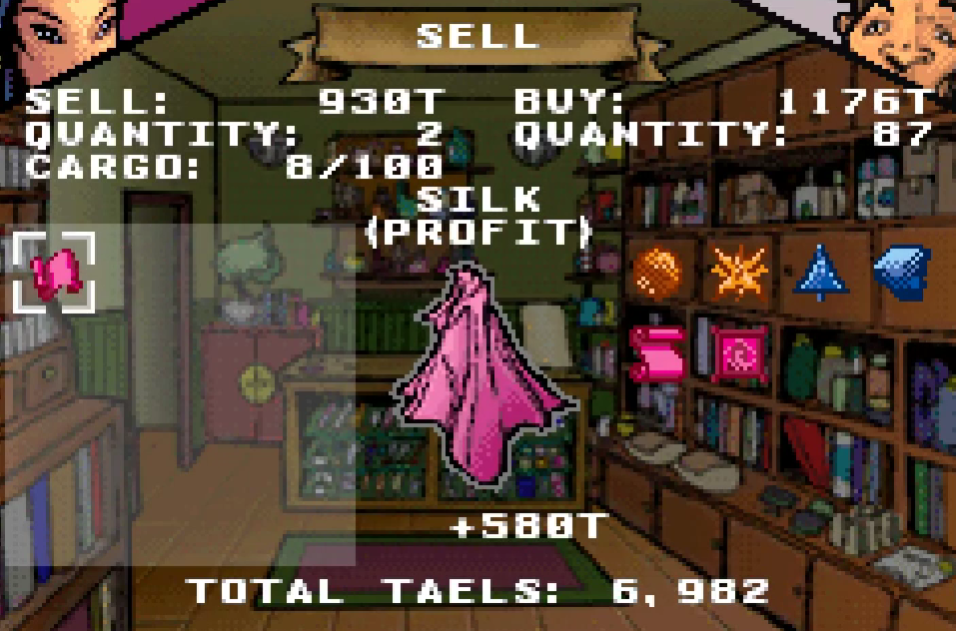
Sea Trader: Rise of Taipan is a foundationally simple economic trading sim. Set in what I’d assume is roughly the 16th to 17th century, you play as ship captain with a dream of building a trade empire - a trade empire of a singular ship, which is a little difficult if my knowledge of 16th to 17th century nautical trading. The game has an entire prelude cutscene where your nameless stand-in’s father is brutally murdered by unsavoury goons he owes money to. Despite that horrific act, and the stand-in’s declaration of creating a trading empire to eclipse all others, Sea Trader: Rise of Taipen is devoid of any storytelling. Not only does it lack any kind of story, it also lacks a lot of things I’ve come to prefer in even the most sterile of genres. Characterisation, personality, elements like this are practically non-existent within Sea Trader. Every character, no matter what country you’re trading in, has the same canned lines, every port has the same skeleton of an area design, and the same, painfully generic looking pirate haunts you across the sea no matter how far you sail.
But what do you actually *do* in Sea Trader? Well, it’s just that - trading. Each city, in each zone, will offer a number of goods for sale at wildly different prices; to pay for upgrades, and to progress into further regions of the world, you’ll need to buy stock as low as possible, and sell it as high as possible. In fact, the entire game is based around the principle of ‘buy low, sell high’. There’s no in-game feature to allow you to track the lowest or highest price of any particular item - though the game does tell you how much you’ll gain or lose per item when selling them - so you’ll either need to take some notes if you want the best deals possible. Personally, I just normally found a general ballpark to aim for - for example, buying silk at around ~300 tael, and selling it above 1000 if possible. Via the consulates that are established in a handful of cities, you can also partake in illegal trading, generally for higher prices but with the possibilities for massive profits if you can smuggle it over to another consulate, with the downside being you can be caught by patrols. This is an element that sounds intimidating, but when I discovered that the penalty was nothing more than a paltry 10,000 tael - a pittance beyond the early stages of the game - the looming threat of illegally trading dissipated entirely.
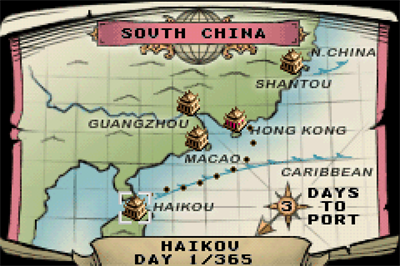
Progression in the game is twofold and deeply intertwined. In each country, or zone, you can visit the consulate, who beyond offering less… legal goods, will sell you a map to travel to the next trade hub for increasingly larger amounts of money. Furthermore, in each successive area you visit, you’ll be able to buy from the shipwright upgrades for your ship, raising its defences, its offenses, or simply the amount of cargo it can carry. Of course, the high seas aren’t without danger - beyond the possibility of being caught with contraband, pirates roam the oceans (or the same, really, really obsessive pirate) who can engage your ship in simplistic, menu based combat. If you damage them enough, you can board their ship and steal their cargo, but if you get sunk, it’s game over. Overall, there’s a charming level of simplicity on display, making Sea Trader the kind of game to just get into a sort of rhythm with, delighting in the basic human need of ‘money number go up’. For the first hour or so, I was content to just learn the ways of the game and begin to amass my fortune, however I could.
But once you get a handle on what Sea Trader is about, that beautiful simplicity very quickly erodes into repetitive simplicity once you learn that your best bet is to just go between two locations (usually two different countries for the best results), buying one stock low, going to the other location, selling your stock high, buying *their* stock low, go back, buy high, repeat until you’ve got enough money to unlock the next country. Plus, with the prices of stock fluctuating seemingly at random, if you don’t get a price you want, you can just travel between two locations again and again until they’re at a decent price. There’s no strategy whatsoever to Sea Trader beyond that - occasionally, you’ll get tips and messages implying that certain commodities are cheap or primed to sell high, but I just found bouncing back and forth, selling luxuries low and high regardless of market conditions, the path of least resistance. At the end of the game, with millions of tael in my coffers, I finally began to partake in illegal trading, and my profits skyrocketed once I realised I had nothing to fear from the authorities.
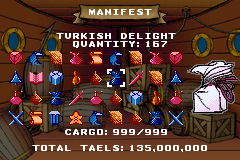
Nothing can really upset the strategies I’ve described. During the game, you’ll be accosted by pirates, who you can flee from, destroy, or loot their cargo. They seem like cool encounters, but rapidly lose any mystique when you realise how easy they are to sink, and how awful their cargo is, it really just becomes a matter of hitting that ‘Shoot’ button again and again and hope you don’t get ambushed again and waste your precious time. They maybe, MAYBE, are worth a little bit to plunder in the early game for some easy cash, but there’s no real sense of scaling as the cost of unlocking the next country rises, so there’s no point in stealing cargo worth ten thousand tael when you’ve got a cargo worth several hundred thousand. A number of other, more minor events can occur whilst sailing, such as scraping against reef to reduce your hull durability, sea creatures that’ll drop you in a random port in your current region, or finding a message in a bottle to learn about a shortage or surplus of goods in a certain town. But they all feel incredibly ancillary to what you’re doing at any given time, or do very little to affect your current situation, they might as well not exist at all. It’s a shame, but Sea Trader: Rise of Taipan is pretty much a facade. Fascinating in its existence, charming in its simplicity, but once you put any real time into it, it quickly devolves into one of the most braindead, simplistic games I’ve ever played.
And that also extends to the visuals, though I can say that ‘simple is good’ works a lot better in this department. It’s a very cartoony, Saturday-morning cartoon vibe, almost evoking the feeling of a late 90s, early 2000s animated classic like The Road to El Dorado or Atlantis: The Lost Empire. I dunno, that’s just what came to mind. The visuals are fine, with the actual design work being quite good, but the game has a general sense of low fidelity and blurriness to a lot of the more complicated spritework in the game. It also suffers from not having enough visual variety across the game; whilst you’re circling the globe in an attempt to become an economic maverick, the locales you visit really don’t reflect that. They’re all just variations on the same kind of port town with slightly different spritework here and there, which is more than a little disappointing.
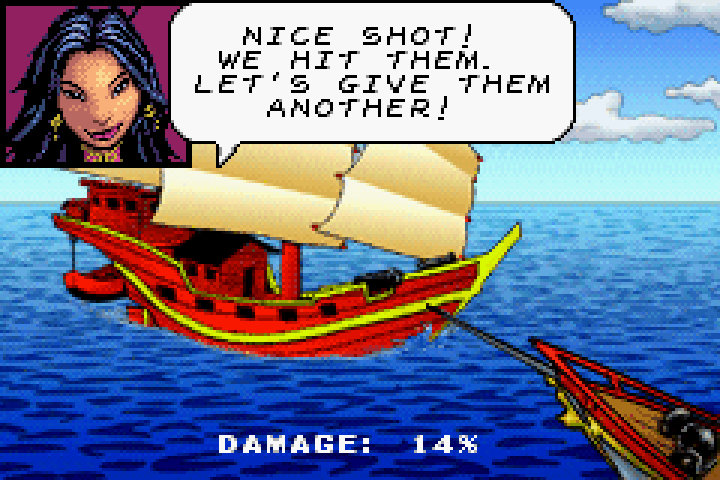
Removing the idea of the Game Boy Advance’s limitations from me for a moment, I feel that the only real way that Sea Trader could’ve been more… I don’t know, substantial of a game would be just giving the player more to juggle, more to interact with. Perhaps making the voyages between towns longer, but giving you additional ships to manage whilst others are travelling. Having an actual economy to combat, with you having to travel further or to certain locales to get a profit, rather than just bouncing between two nearby towns until the randomized prices strike your fancy. Maybe having some sort of scenario to follow with certain restrictions or greater hazards, anything to give the game a bit more character beyond just its basic premise. It’s a shame, because the foundation of the game is quite strong; but once you’ve worked out its foibles, there’s really nothing else to do, and that’s the biggest shame.
Wow. When I started this review, I thought I was going to be a bit more positive towards Sea Trader: Rise of Taipan, but writing all this has really cemented how hollow and simplistic the game really is. It’s not awful, certainly nowhere near that, but it’s undoubtedly a bare-bones experience held up by there being very little even close to being like it on the Game Boy Advance. Perhaps with some less freeform scenarios, deeper goals than just ‘make hella money’ and a less randomized economy, Sea Trader could’ve been one of the true diamonds in the rough for the Game Boy Advance. What we have here isn’t anywhere near atrocious, but it sadly falls into the category of the kind of game that’s worth to spend an hour or two with, just to say you’ve played one of the GBA’s weirdest games. But beyond that? It’s a shame, but there’s just nothing there to enjoy.
Thanks for reading my review of Sea Trader: Rise of Taipan! Wish it was a little better, but ah well, the unique charm was enough for me. As always, you can find me all over the place under GameBoyAbyss or Lemmy7003, and can email at mgeorge7003@hotmail.com if you have any questions or requests. See you next time!
